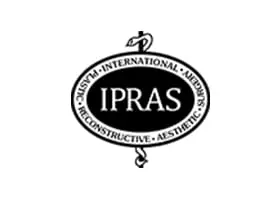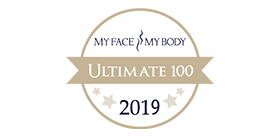Breast Implant Removal
The decision to have breast implants is not to be taken lightly and whilst the majority of ladies have a life-changing outcome for the better, a small number of patients may have a issues with their implants longer term or there may be personal reasons to decide to remove them (explantation).
The commonest reasons for removal (and usually followed by re-implantation) is for a change in size (usually bigger but sometimes smaller), capsular contracture (symptomatic adverse capsule formation) or symptomatic rupture. In these cases, the majority of ladies will have implants re-inserted either alone or in combination with uplift surgery and/ or fat transfer. Some ladies will decide for personal reasons that their implant have served a purpose and they no longer require them to be replaced. So as you can see there are a variety of different scenarios that may occur. Mr Banwell and his team are here to support you through the process whichever approach you decide to take. Any questions that you would like to ask are welcomed.
REMOVAL & REPLACEMENT OF IMPLANTS
The commonest reason for breast implant removal is actually for exchange of breast implants – the choice may be to keep the same size, go bigger or go smaller. The fundamental thing here though is that there is a desire to replace them. In actual fact, we have a page entitled ‘Exchange Implants‘ elsewhere on this site . Please click here if this is your preferred approach – we are sure it will help provide additional useful information.
REMOVAL & REPLACEMENT OF RUPTURED IMPLANTS
Rupture is an unusual risk of breast implant surgery. The rupture rate for breast implants varies between 4-10% and seems to become more likely after 8 years. The majority of silicone breast implant ruptures are clinically undetectable and patients may be totally unaware of this but it may be discovered as an incidental finding. However, patients with breast implant rupture may present with signs & symptoms such as pain, breast lumps or changes in breast shape and size or as capsular contracture (which can occur without rupture but also due to rupture). Implant ruptures are usually confined to the peri-prosthetic capsule but it may also extravasate into the adjacent breast tissue and beyond. Patients with ruptured implants have been studied closely and the consensus of the literature states there are no health risks associated with implant rupture. However, it is recommended that symptomatic patients with ruptured implants should be offered the choice of observation, or explantation and capsulectomy with or without replacement.
We are often asked if an ultrasound scan or MRI will help with the diagnosis but this is not necessarily the case as there may be both false positive and false negative results too. Ultimately the only way of knowing whether an implant is ruptured is at operation. Regardless please ask if you would like a scan organised as this may provide reassurance for you one way or another.
CONCERNS REGARDING MACRO-TEXTURING & BIA-ALCL
The introduction of texturing to implant shells was thought to represent a major advance in breast implant design. Capsular contracture rates were reduced from 40-60% down to 10-15%. However, whilst this has been a very positive advance, it has now come to light that the texturing process might be related to the development of a rare condition known as Breast Implant Associated- Anaplastic Large Cell Lymphoma (BIA-ALCL). This has had huge media attention and not surprisingly has created anxiety in many ladies who have had breast implants. Most of the major breast implant manufacturers have come under scrutiny as a result of this including Nagor, Allergan, Sientra, Mentor, etc. It is important to recognise that globally, textured implants have been considered standard and thus many, many girls around the world have been affected by these comments.
As ever, much information out there has been sensationalised and thus it is important to put everything into context. At the same time, it is vital that the medical profession is transparent and does everything it can to investigate all potential risks and complications. Currently the risk of ALCL is quoted at around 1:25,000 – it is therefore extremely rare but presents as sudden swelling of the breast (as a late seroma) and can be diagnosed by fluid and capsular tissue analysis. In comparison, the commonly quoted risk of breast cancer in a woman is 1:8, so breast cancer is infinitely more common than ALCL.
The current recommendations and statement by PRASEAG is listed below (April 2019)
‘Breast cancer experts from across the UK have been working together to look at the risk to people with breast implants of developing a very rare form of cancer. This follows the news that some types of breast implants have been withdrawn in France.
Based on analysis of the latest scientific evidence and on expert clinical opinion, the Medicines and Healthcare products Regulatory Agency (MHRA) advises that there is no need for people with breast implants in the UK to have them removed because there is no new evidence that the risk has changed. The situation will be reviewed regularly by the MHRA.
If people are worried following their breast implant surgery, they should see their GP or the surgeon who did the implant. This is particularly important if they notice swelling around their implant more than six months after having the breast implant (regardless of how many years later).The MHRA issued this advice following close working with the British Association of Plastic, Reconstructive and Aesthetic Surgeons, the Association of Breast Surgery, the British Association of Aesthetic Plastic Surgeons and other experts to assess the risks associated with breast implant associated anaplastic large cell lymphoma (BIA‐ALCL). MHRA is also working closely with organisations doing similar regulatory work in Europe and internationally.
In addition, the independent Plastic, Reconstructive and Aesthetic Surgery Expert Advisory Group (PRASEAG) has been monitoring UK cases of BIA‐ALCL and working closely with MHRA and the information is regularly updated on the MHRA website.
MHRA is continuing to collect evidence and investigate the disease, both nationally and internationally. Clinicians are being informed of the need to report all cases of BIA‐ALCL or suspected BIA‐ALCL to the MHRA via the Yellow Card scheme.’
EXCHANGE TEXTURED IMPLANTS FOR SILKSURFACE
Despite the reassurances mentioned above, some girls would like to exchange their implants for the latest generation SilkSurface, (nanosurface, neosmooth) implants made by Motiva. This may, of course, coincide with 10 year mark but it may be that the latest technology implants are more appealing and that they would like to remove their textured implants just to be on the safe side. Mr Banwell would be happy to discuss this in more detail if this would be your preferred option. NB. The only other option is to convert back to the archaic original smooth implants of 30 years ago which Mr Banwell believes is a retrograde step.
CONCEPT OF SYSTEMIC SYMPTOMS OF BREAST IMPLANTS [BREAST IMPLANT ILLNESS (BII)]
Breast implants (like hip/knee prostheses, metalwork for trauma or orthognathic surgery, heart valves and coils) are foreign bodies and as such the immune system recognises them as foreign and responds by generating a wall of scar tissue around them (in the case of breast implants this is called a capsule). This is a completely normal process, the breasts usually feel soft, and in the vast majority of ladies there is no issue. However, in a small percentage of patients (as Mr Banwell always explains to his patients pre-operatively), the capsule can sometimes misbehave and starts to harden & contract. This can cause symptoms such as pain, discomfort and a change in the shape of the breast. Whilst capsule formation per se is considered normal, so-called ‘capsular contracture’ is an adverse response of the body to breast implants.
Over a two decades ago there were some concerns that breast implants may also cause other responses and symptoms within the body. The so-called ‘silicone crisis’ was thought to be due autoimmune-mediated events within the body (also called ASIA syndrome, Silicone incompatibility syndrome). Whilst independent government scientific reviews around the world have concluded that there is no causal relationship between silicone and auto-immune mediated problems, it appears there maybe a small group of patients who present with a variety of unexplained symptoms and seem to get better when their implants are removed. This condition has been termed on social media channels Breast Implant Illness (BII) but the latest term recommended term is Systemic Symptoms of Breast Implants (SSBI). It is still currently debated by the general medical community regarding the significance of these anecdotal reports and further research is required. However, despite this ongoing controversy, Mr Banwell firmly believes it does exist and has seen the significant (and sometimes immediate) benefits of explantation in these patients where it appears as though their immune system has had a hypersensitive response to the breast implants (a predisposed individual can also be affected by the coil or any other implanted foreign body). Mr Banwell has an interest in breast implant illness and ‘total’ capsulectomy surgeries (incorrectly called ‘en bloc’) and is very happy to help if a patient thinks they are affected.
TOTAL CAPSULECTOMY (also termed ‘EN BLOC’)
‘Total (+/-in situ) capsulectomy’ or ‘en bloc capsulectomy’ is the commonest procedure requested by those patients who present with symptoms of Systemic Symptoms of Breast Implants (SSBI)/ breast implant illness (BII). Whilst removing the immune stimulus (ie. the breast implants) and washout of the pocket seems to benefit patients immediately and is the most important aspect of the operation, some patients also elect to have the capsule removed too. This is very controversial and the current recommendations is NOT to remove the capsule unless there is good medical evidence to do so. Mr Banwell is very experienced at this procedure and has helped many women in this situation. However, please understand that this does increase the risk of bleeding complications, scar length, seroma formation, thinning of the breast tissues, the length of the operation and indeed the cost. As the medical benefit for removing an asymptomatic thin capsule is not proven ( it has been shown they reabsorb/remodel within a few months) this decision must be weighed up very carefully by patients. It is important to understand that for technical reasons it is not always possible to remove the whole capsule. However, this is usually understood by everyone so if you would like an attempted (total) capsulectomy performed in association with explantation of your implants please discuss this iwht mr Banwell at consultation. Mr Banwell would be happy for the capsules to be sent away for pathological analysis if patients so wish – please let Mr Banwell’s team know if this is the case (there is an additional cost for this). Please note that Mr Banwell also routinely photographs the implants and capsules.
EMPTINESS & SKIN EXCESS FOLLOWING REMOVAL
Removal of implants without re-implantation will leave the breast deflated with a variable appearance depending on the amount of remaining breast tissue. Often a double fold deformity may be seen once the implants are removed and this has to be accepted as a consequence of the operation. It is recommended to allow tissues to settle for at least 6 months after such procedures and many patients are happy with the resultant appearance. However, some patients elect to have a subsequent breast lift procedure (mastopexy) or fat transfer procedure.















































25th March 2025
Minimally Invasive Breast Surgery at Mr Banwell
Read More
24th March 2025
Revolutionary Ultrasound Breast Implant Check Now Available
Read More
18th March 2025
Body Contouring Surgery After Significant Weight Loss
Read More